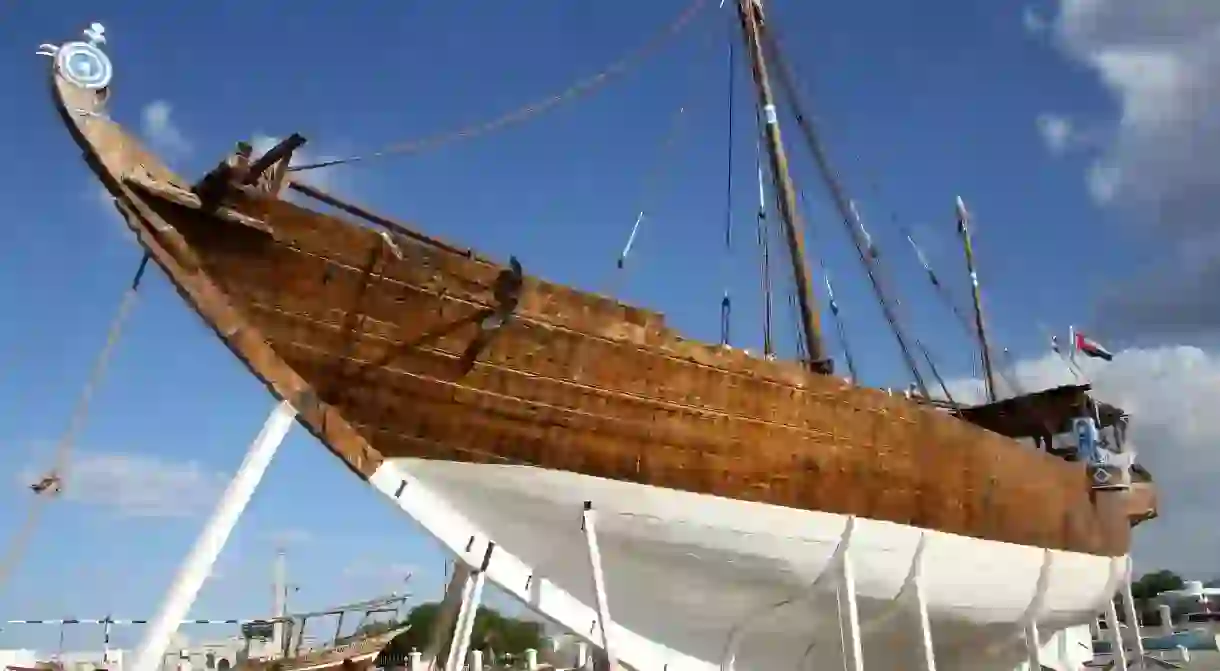Here's Why Omanis Are One of the Greatest Shipbuilders in the World

Oman is surrounded by the waters of the Arabian Gulf, the Gulf of Oman and the Sea of Oman, from three directions: north, east and south. Located in the Arab Peninsula, Oman can also be considered a peninsula, which is why lots of Omanis have turned to different sea-related jobs. Here is why and how Omanis built their reputation as one of the greatest shipbuilders in the world.
History of Shipbuilding in Oman
Oman is considered one of the leading nations in seafaring. It pioneered in this field as its ancient civilization “Majan” had connections and relations with other civilizations around the world, especially in Iraq, India and Europe. In Ras Al Jinz in eastern Oman, the remains of Reed Boat, which was used for trading with India and dated back to over 4,500 years ago, were found. Due to the Omani capabilities in ship and boat building, as well as their strong sea navigation skills, ports and harbors in Oman were well-known around the world.

Dhofar was known for its booming Frankincense trade for which it followed trading routes through the sea to deliver frankincense to Egypt, India, Rome and China, using their own ships. The golden age for ship building in Oman was in the 18th and the 19th centuries, during which the Omanis advanced their expertise. They added rows of small windows to dhows, and used gypsum and shark fat to seal gaps between boards. It is worth mentioning that Omanis were building all boats by hand, and several foreign writers wrote about the beauty of these boats during their voyages to Oman.

During the era of the vikings, Oman had established its own maritime trading empire. In the mid 17th-century, the Omanis chased the Portuguese out of the Omani lands and down the eastern coast of Africa. Then, they settled in Zanzibar and added it to the Omani empire, making it the capital of Oman.
Process of Shipbuilding in Oman
Omanis memorize the way of building ships by heart, as they have been practicing this craft and passing it to new generations for a long time. Craftsmen produce traditional Omani fishing boats, depending only on their memory, during a period of three to six months. Meanwhile, building a dhow takes around six months, depending on its size. The most prominent wood used in shipbuilding is teak, which is a tropical hardwood imported from India.

Famous Cities for Shipbuilding in Oman
Oman had several ports and harbors around its coastline, starting from the coast of Khasab in Musandam in the very north, to Sohar, Muttrah, Muscat, Qalhat, and Sumharam in Dhofar in southern Oman.
Muscat Port
The importance of Muscat as a sea port dates back to the first century, when it was discovered by Greek geographers who called it the “Hidden Port”. In the 9th-century, Muscat was the main port for all ships heading out of the Gulf to India, China and East Africa. As the link connecting the Mediterranean and the Indian Ocean, Muscat port was highlighted in many of the old maps of sea routes.

Sur
Sur is the capital city of Al Sharqiya region in eastern Oman, that has an important history as a main destination point for sailors and as a trade center with East Africa and India. It was known as one of the top cities on the Arabian Gulf to build ships that would sail to Zanzibar, China, Iraq and India, and would be used for pearl shipping.














